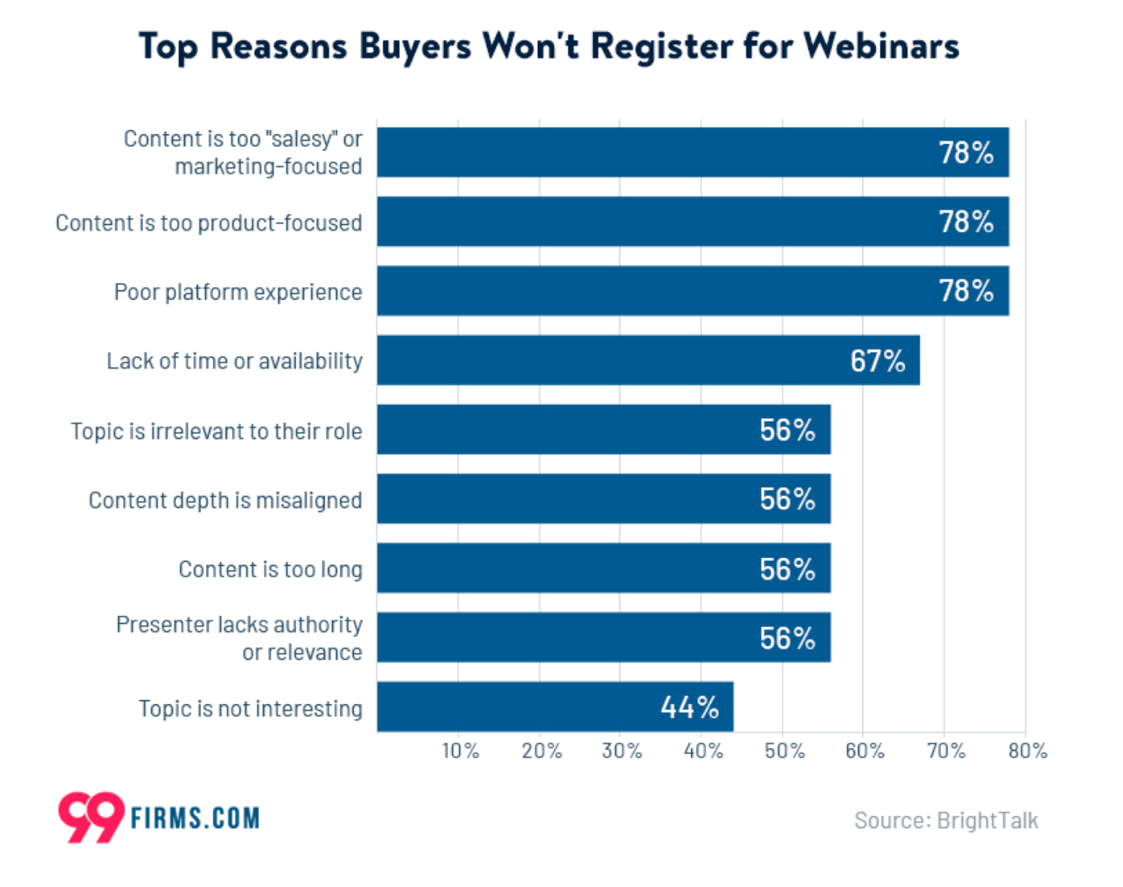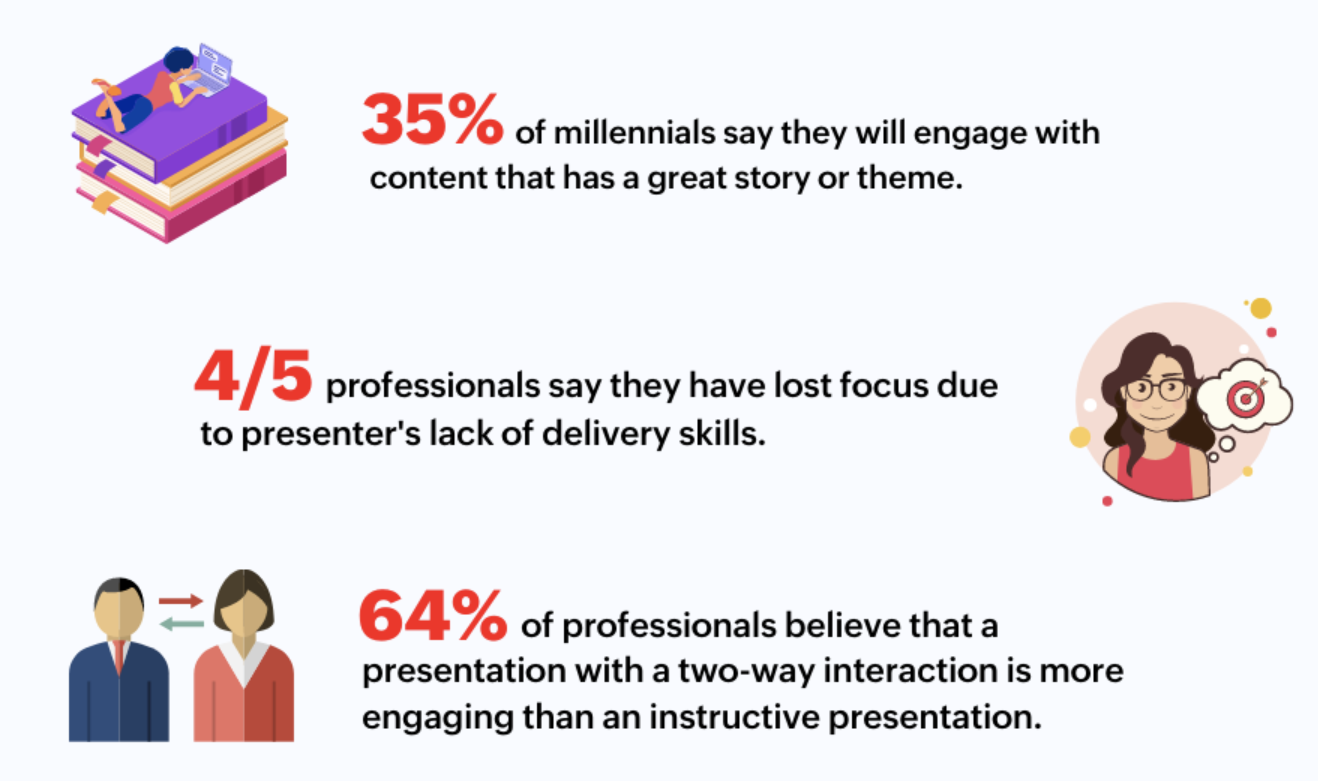6 Tips to personalize your presentation to boost productivity

Do your audience’s eyes glaze over within minutes of starting your presentation? While you might know engaged audiences retain more information, keeping your audience interested isn’t quite as simple. The key to engaging your audience? Personalize your presentation.
Learn six tips for personalizing a presentation to make it more engaging without spending hours on design.
Key takeaways:
- Personalized presentations start with a deep understanding of who the audience is
- Focus on the audience’s pain points and needs rather than your business
- A presentation should be a conversation that’s personal and engaging
End the snooze fest
The average person’s attention span is eight seconds. Meanwhile, the movie Avengers: Endgame is just over three hours long and is still among the top 100 most popular films.
Does that mean business presentations need to involve magical hammers and aliens to hold the audience's attention? Thankfully not. However, the popularity of long films like Avengers does show that short attention spans aren’t always the audience’s fault. Many times, it’s the medium’s fault.
For example, an hour-long webinar attracts more attendees than a half-hour webinar. But the top reason attendees don’t attend webinars isn’t the length. Rather, it’s because attendees don’t find the topic relevant or engaging.

If presenters want to hold their audience’s attention past eight seconds, they need to take their presentations up a notch by personalizing the content, so it’s relevant and engaging.
6 tips to personalize your presentation for better engagement
Use these six tips to actively engage your business presentations through personalization.
1. Research your audience
Personalizing content goes beyond just plugging a company name into the title of the presentation. Instead, personalization is a deep understanding of who you’re speaking to and adjusting everything from images to how you talk to that audience.
If you want to personalize your presentation, you need to start by understanding who you’re personalizing it for. For example, are you talking to a team within your business or key stakeholders?
Some essential information to understand about your audience includes:
- Number of attendees
- Industry
- Titles
- Age
- Gender
- Location
- Education
In addition, you will want to understand key issues connected to each of these details. For instance, what are the primary challenges for those in your audience’s job position?
2. Make the message relevant
The key to personalization is shifting the focus from the presenter to the audience. After all, your audience is the reason for the presentation.
An effective way to personalize the presentation is by discussing topics from the audience’s perspective. For example, Walmart recently announced that it would start the year-end shopping season in October.
Tom Ward, executive vice president for Walmart U.S. said, “We know that our customers’ wallets are under pressure, and value is always top of mind. They trust us to consistently offer low prices on everyday essentials, and we want to make it easy for them to find that same value when holiday shopping, which is starting earlier than ever this year.”
Ward’s statement focuses on customers and their pain points first rather than Walmart’s sales. He began by acknowledging customers' financial burden and tied that into the sale extension. By doing this, he immediately made the announcement relevant and personal to the audience.
3. Treat the presentation like a conversation
On paper, your audience might be CEOs, marketing managers, financial leaders, or tech professionals. However, at the end of the day, each one is a person. So, the presentation should look and sound like you made it for people. Integrating video testimonial software can also make your presentation more conversational and relatable by allowing real customers to share their experiences directly.
A personable presentation uses conversational speech, tells stories, and incorporates humor. For instance, you can use a meme to break up some of the heavier information and move away from the slides entirely to tell a personal story.
When you think of your audience as people rather than by their job titles, you’re more likely to relax when delivering presentations, which makes it feel personal and inviting. As a result, you’ll soon notice your audience becomes more engaged and responds more enthusiastically to your message.

4. Mix up your media and method
Would your audience rather sit through three hours of an Avengers movie or three hours of someone reading a chart of financial statistics? Most would probably choose Avengers. So what makes Hollywood films more engaging than presentations?
There’s a storyline, colors, movement, sights, and sounds to involve all the senses.
Presenters can learn from films when creating presentations since video is one of the most engaging platforms, and the average person watches 19 hours of video weekly.
Using colors, unique templates, images, video, and audio in your presentation design will go a long way to making a presentation feel unique and engaging and not like the dozen other presentations your audience saw that quarter.
Prezent helps you create personalized presentations tailored to your audience without the hassle or inconvenience of spending hours designing customized templates by hand.
5. Get your audience involved
The most valuable source of information for personalizing your presentation is your audience. Adding a Q&A session at the end of a presentation ensures you address all your audience's questions, concerns, and curiosities. In addition, by giving the audience time to speak, you involve them more in the presentation and provide the information they want to hear.
6. Ask for feedback
What do Tom Cruise and Steve Jobs have in common? A recent article on Forbes dived into these two leaders’ presentation styles, despite the vast differences in their industries. For example, both Tom Cruise and Steve Jobs prepared for a public presentation by performing practice runs.
The creators would gather a small group to watch the film or presentation. Afterward, the presenter would ask the test audience for feedback on how interesting it was, what the presentation's strengths were, and what could be improved. This allows the presenter to adjust the presentation for the audience to ensure it’s relevant and personal.
Create customized presentation solutions
Do you want to create a presentation that engages your audience through personalized content and visuals?



.avif)








